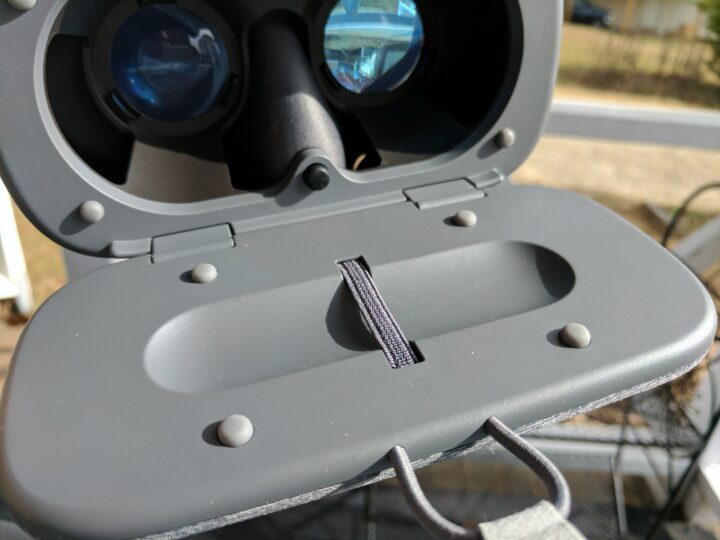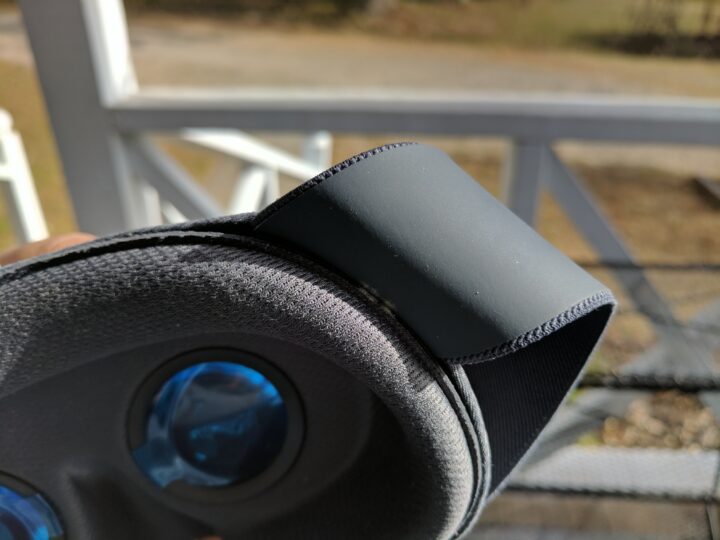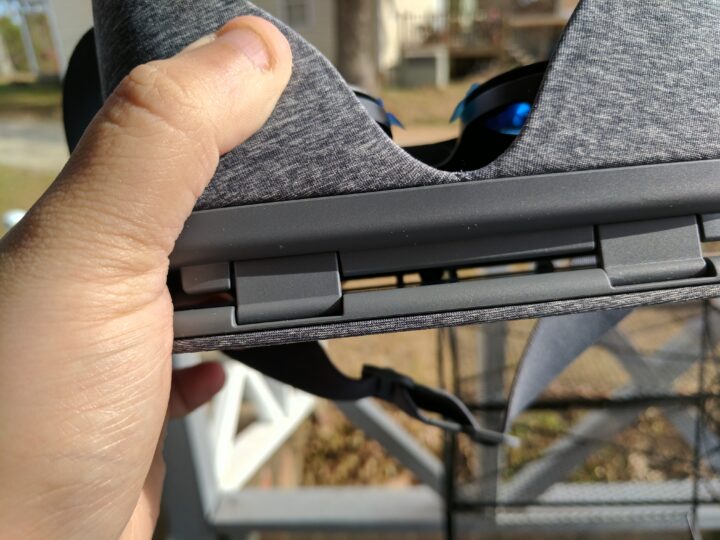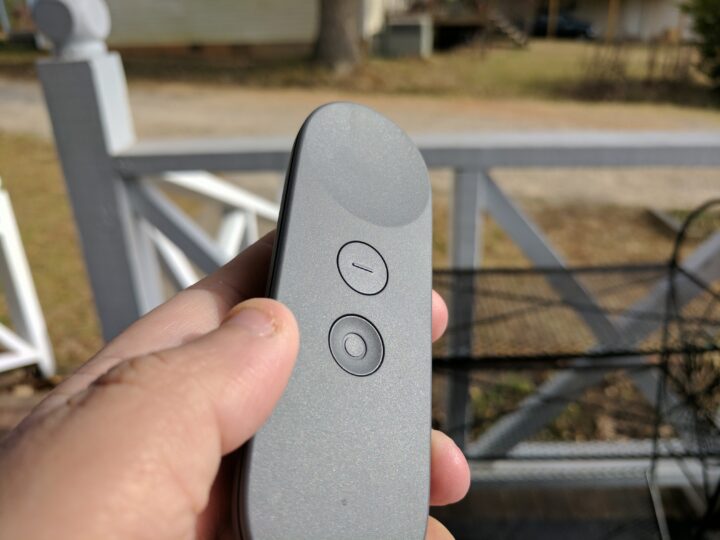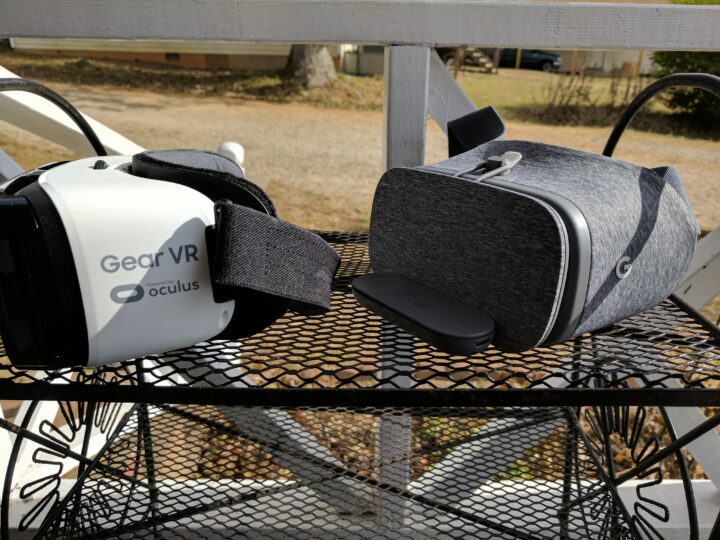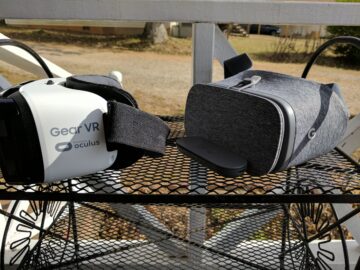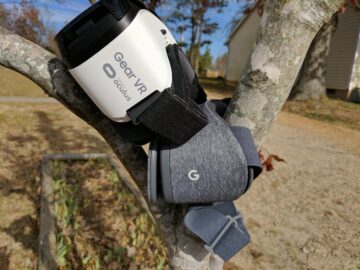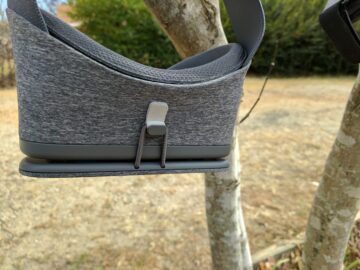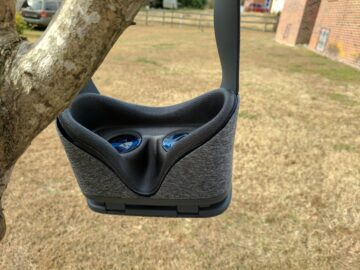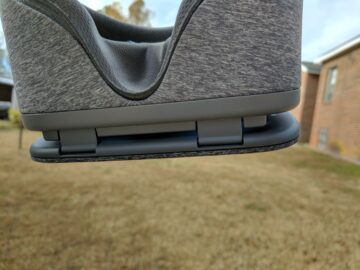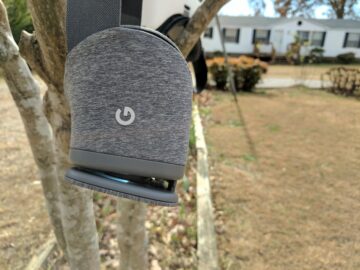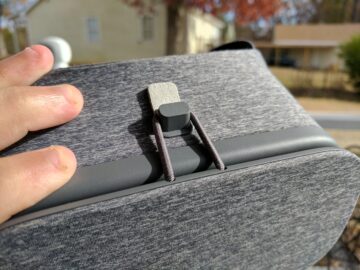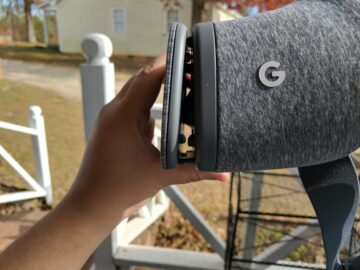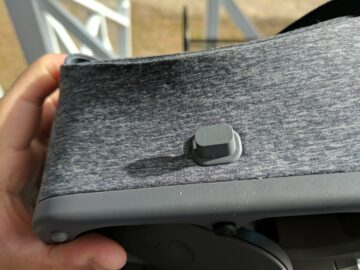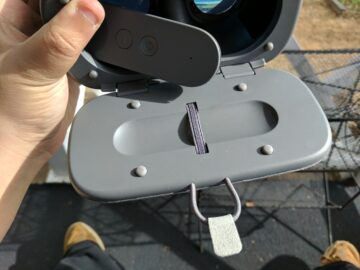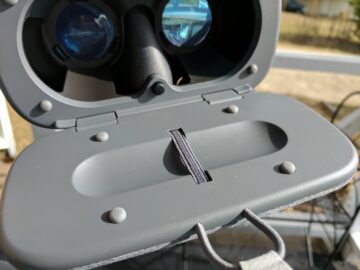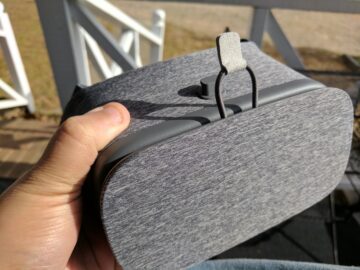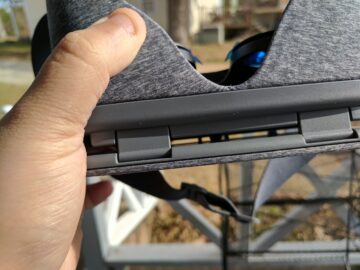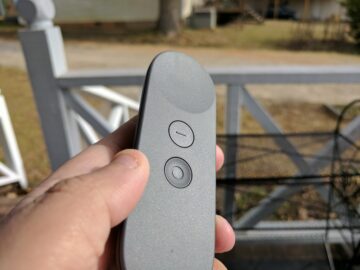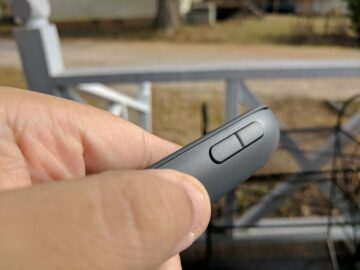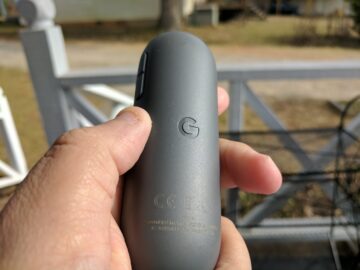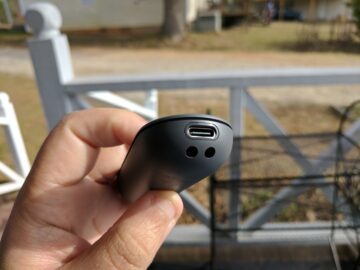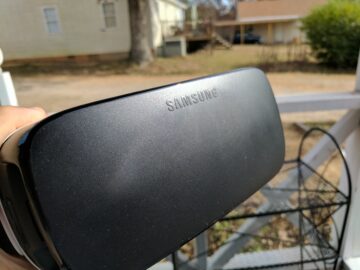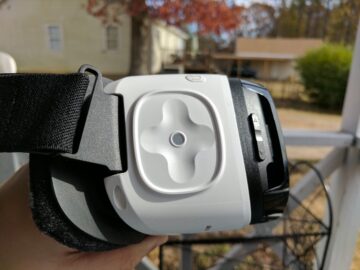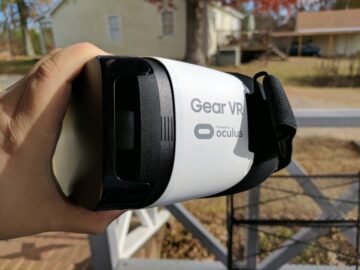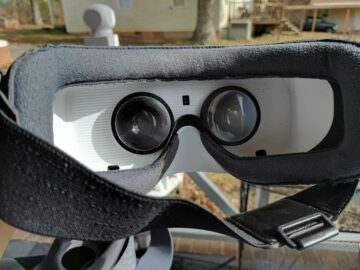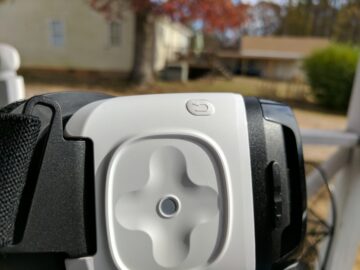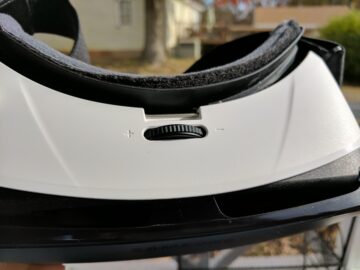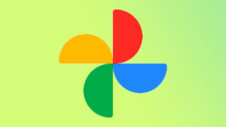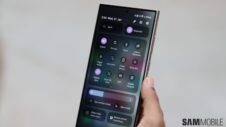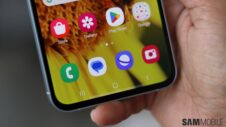Samsung's Gear VR is now in its third-generation, seeing that the Korean giant announced its Innovator Edition in 2014 with the Galaxy Note 4. Google had Google Cardboard, but few can take a cardboard VR headset seriously. So, after some time dabbling in cardboard design, Android's owner decided to get serious about VR design and introduce the Daydream View, its new VR headset compatible with only its Pixel and Pixel XL phones for now.
With Samsung having been at VR for some time along with Google, and with Daydream VR becoming extended to other non-Google Android-powered handsets in 2017, we can take a look at these two headsets to determine which one is best for consumers-at-large. Which should you choose: Google's Daydream View or Samsung's Gear VR? Let's get started below.
Keep in mind that I'm using the White 2015 Gear VR headset to compare to Google's latest.
Daydream View vs. Gear VR: Phone Tray
The phone tray or phone slot is the location of your smartphone positioned in the front of the VR headset. The Gear VR has a black phone tray cover that can be taken off and reinserted after locking the phone in place. The phone tray can be replaced in the event that you lose the tray cover.
The Daydream View, on the other hand, stays whole by two hinges at the bottom of the headset and a string loop built into the top of the tray cover. My first thought, upon opening the tray area, was “where does one place the Pixel XL?”
Unlike Samsung's Gear VR, the Daydream View doesn't have locks to keep the phone in place: you simply place the Pixel phone in the Daydream View and then loop the string on the tray cover to the top of the headset. That's it. There's an issue with this: namely, the idea that the Pixel phone could slide out of place while you're using the device – leading to possible damage or injury to your smartphone. No, I've not experienced this, but it is possible.
The piece at the top that holds the string in place can break and render the device unusable. The hinges can also break, which means that the tray, once detached and broken, can't be upgraded (unlike Samsung's Gear VR phone tray cover).
Next, there's the phone tray cover itself. If you sit the Daydream View headset down without the phone, you'll notice a sizable gap present between the tray cover and the rest of the headset. I turned the headset to show the “G” logo, then placed it in the air. The result is that I could see space in-between the headset and the environment.
This may not seem like much when you're putting it away, but it's definitely noticeable when you put on the headset sans the Pixels. The gap was so noticeable that camera flashes could be recognized without taking the headset off by way of the same gap.
The Gear VR has its own “gaps” at the top of the phone tray cover and on the sides of it, but you still can't see any light coming into the Gear VR when you put it on. One has gaps that bring in light, the other has gaps that don't affect the general viewing experience at all.
Daydream View vs. Gear VR: Headband Strap
The headband strap is another area that shows Google and Samsung's various design approaches. The Google Daydream View has a headband strap sewn in to the clothing material of the headset itself. In contrast, the Samsung Gear VR leaves room for detachable headband straps that let you buy a new one, if need be.
It can be said that most users won't need a new headband, but things do happen from time to time. Additionally, the headset is one of the most important components of the VR headset: it's called a “headset” for a reason (because It's worn on the head). If the headband strap breaks, the headset is, in a phrase, “rendered unusable.”
Daydream View vs. Gear VR: Build Quality
Build quality is yet another area where the Gear VR and Daydream View differ: the Gear VR consists of plastic and velcro while the Daydream View consists of velcro, plastic, and a particular “clothing material,” according to Google (the nature of this clothing material is unknown on its product page). Additionally, Google says the Daydream View is washable, but don't read too much into it: it basically means that you can hand wash the Daydream View – which is nothing different from what you'd do if you got a pizza stain on the Gear VR. I'm betting you'd need to use some sort of fabric stain remover for the Daydream View, however, should you get tomato paste or chicken soup on it.
Google had in mind the idea of making the VR wearable “fashionable” because it will be worn around the head, but Samsung's Gear VR seems more practical in this regard. After all, you will not (likely) wear the Daydream View headset all day long, or care about whether or not it matches your brand new outfit if you're spending the day with friends and family.
Controls
With every VR headset comes the need to control the device, since the smartphone is placed into the headset. Google's Daydream View has a gesture controller that lets you perform gestures on the Pixels. It also has some touch buttons (including volume up and down buttons), but it's designed for the use of the trackpad and gesture motions.
Samsung, on the other hand, has designed the Gear VR to be a “VR Galaxy” with the action controller at the right side of the headset. I've always been something of a gamer myself, and prefer a specific VR GamePad controller for the 2017 Gear VR headset (Samsung, you can do this!), but the side controls are a nice backup in the event that my controller stops working. With the Daydream View, though, I don't have a backup plan.
Conclusion
Google's serious venture into VR by way of its new Daydream View headset is something to consider for the future. I'm glad that Google has made this leap and wants VR to be the next big thing for its mobile platform, and I've found so far that Daydream View is easier to experience with glasses on than Samsung's Gear VR (I'd like to see Samsung improve the user experience for the more visually challenged among us). At the same time, though, Samsung's third-generation handset shows that refinement is the path of all companies, no matter how “right” they perceive their first-generation devices to be.
Regardless of my optimism, though, there's work that remains necessary to make the Daydream View even better than it is now. It has a few problems that can be overlooked if you get the headset for free. If you're buying it outright, consider the $99 headset instead of the $80 one.
To see just more photos of the Daydream View and the Gear VR, take a look at the photo gallery below.

